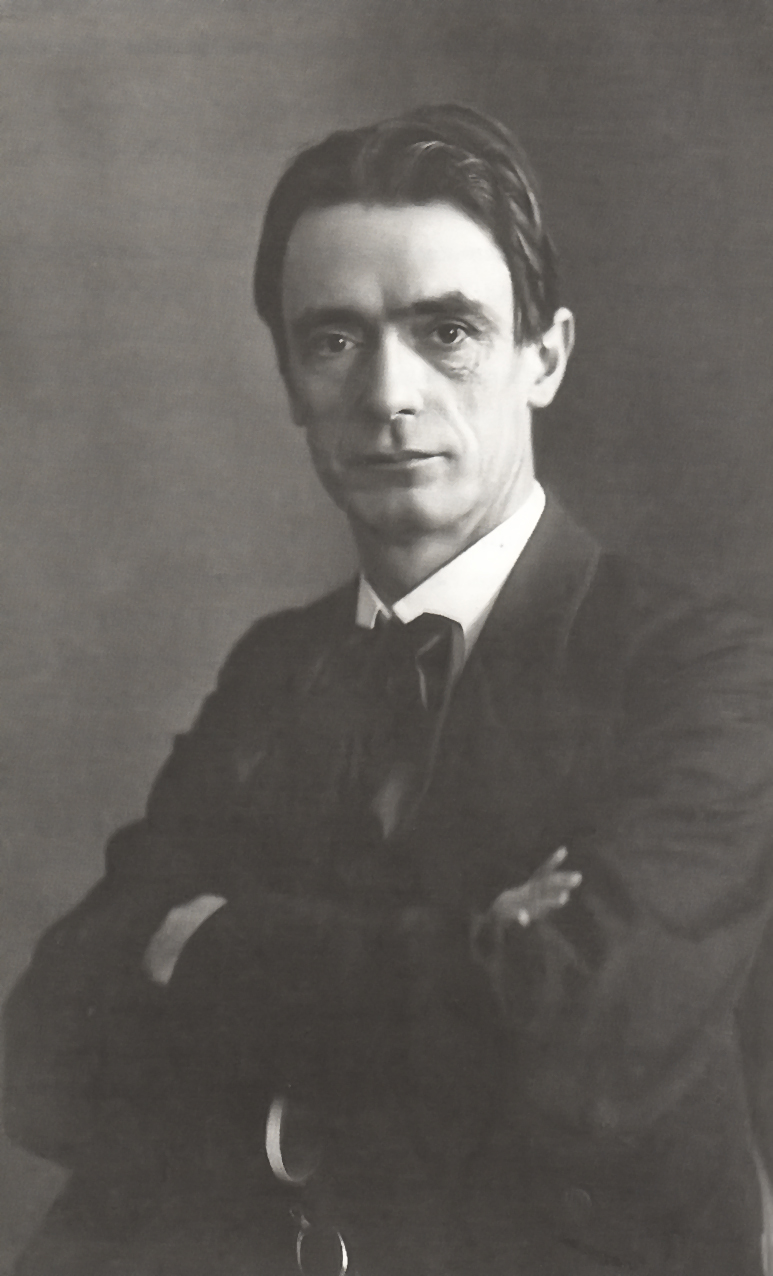
2023 Update:
Here is the first of a never-completed nine part series of musings on Valentin Tomberg, Catholicism, Rudolf Steiner and the world tragedy, written many years ago in 2011. In recently re-visiting it, for the first time in years, I have seen fit to rewrite it a little. But for the most part it remains as it was, even if today it seems to me very slightly crude and immature in places.
My more mature thinking on Tomberg is found in my books, key articles like this one and the YouTube videos you will see peppered through the series. Still I think there may be valuable material in this series not found elsewhere and For navigation purposes, we list and link the nine parts here:
- Valentin Tomberg, Catholicism and the Counter-Revolution—Pt. 1
- Valentin Tomberg, Catholicism and the Counter-Revolution—Pt. 2
- Valentin Tomberg, Catholicism and the Counter-Revolution—Pt. 3
- Valentin Tomberg, Catholicism and the Counter-Revolution—Pt. 4
- Valentin Tomberg, Catholicism and the Counter-Revolution—Pt. 5
- Valentin Tomberg, Catholicism and the Counter-Revolution—Pt. 6
- Valentin Tomberg, Catholicism and the Counter-Revolution—Pt. 7
- Valentin Tomberg, Catholicism and the Counter-Revolution—Pt. 8
- Valentin Tomberg, Catholicism and the Counter-Revolution—Pt. 9
And now back to 2011 — Roger Buck

In this series, we have been considering the tragic sense of cultural degeneration, expressed in Valentin Tomberg’s legal and political Catholic works.
I have also tried to highlight Tomberg’s departure from Rudolf Steiner’s Anthroposophy and conversion to Catholicism.
Yet the suggestion has been made that continuities with Steiner persist into Tomberg’s later writings—all of which defend a very traditional Catholicism.
Whilst a clear paradox exists here, let us be clear that the differences between Anthroposophy and Tomberg’s Catholicism are profound.
Among many other things, Steiner does not share the consistently, unambiguously bleak picture of the Reformation, French Revolution and related phenomena that the Catholic convert Valentin Tomberg would now repeatedly emphasise.
Much more to the point: Rudolf Steiner repeatedly criticised Rome. Steiner, in fact, once expressed a wish that the Church of Rome would have died at the time of Dante, hundreds of years ago …
Thus, none of what follows is intended to in anyway endorse this tragic perspective of Steiner’s.
Nonetheless, I want to point to an unusual continuity between Steiner and the Catholic Tomberg, with which no Catholic of Faith can have much difficulty.
Paradoxically, the Catholic of Faith might even applaud Rudolf Steiner on this single strange continuity, at least.
The continuity I have in mind is that which lies between Tomberg’s urgency and Steiner’s similar burning concern with the degeneration of civilisation.
If we listen to Steiner carefully, we will see that not only does he speak in a similar vein, but that Steiner even affirms Rome, for being awake at least, where no-one else is awake.
Let me turn to lectures from 1920 by Steiner (whose source is given below). Italics have been added by myself to denote turns of phrase, worthy I think of special reflection.
Now apparent contradictions abound here – and not only about Steiner’s condemnation and yet strange affirmation of Rome. For it might appear that Rudolf Steiner was also critical of the rise of Natural Science. But that is not the case, at all. Rudolf Steiner certainly celebrated this rise.
Nonetheless, we see Steiner enjoining his followers to feel in their hearts – painfully in their hearts – certain things which he indicates they are not awake to – although Rome is. Here is Steiner:
I should be interested to know how many people felt as if stung by a viper when they read a certain sentence [which at the time, Steiner spoke had recently appeared in the German language press].
I should really like to know how many people, when reading this felt stung by a viper! The sentence runs:
‘Religion, which represents a fantastic reflex in the minds of human beings, concerning their relations one to another and to nature, is doomed to natural decay through the victorious growth of the scientific, clear and naturalistic grasp of reality which is bound to develop parallel with the establishment of a planned society.’
This sentence is to be found in an article on the measures taken by Lenin and Trotsky against the Russian Catholic Church …
One knows for a certainty that the number of Lenin’s opponents, who feel as if stung by a viper on reading such a sentence is very small.
I want to emphasise this as not being without significance, because it brings out to what an extent modern humanity passes lightly over things, usually asleep – how it passes over the weightiest facts, facts which are decisive for the life of humankind on this earth …
But the Roman Catholic Church is awake, she alone in fact is awake, and is working systematically against the approaching storm …
What is it that is to bring about the decay of the old religions one and all? It is all that has arisen during the last three to four centuries as modern science, enlightened science in the educational institutions of civilized humanity.
Bourgeois teaching and bourgeois methods of administration have been adopted by the proletariat. What the teachers of the universities and high schools have put into the souls of humanity, comes out through Lenin and Trotsky. They bring out nothing but what is already taught in the institutions of civilized humanity.
My dear friends, today … the primary necessity is no longer to allow our children and youth to be taught what has been taught right up to the twentieth century in our universities and in our secondary and elementary schools …
That is why one has to say that whoever reads a declaration such as the one I have just quoted, even if it only appears in a few lines of an article, should feel as if stung by a viper; for it is as if the whole situation of present day civilization were illumined by a flash of lightning.
Dear Lector, I would beg you to delay judgment, while I unpack more from Steiner. Again I wish to stress many polarities in his thinking.
Rome, Steiner claims, is not the answer, although Rome alone is awake to the heartbreaking trajectory he will depict. Natural science is in itself good, but has given rise to tragedy. Materialistic Communism is decried here – but Steiner was equally lucid about the alternate threat posed to the world by Materialistic Capitalism …
Now I want to move in the direction of clarifying what it is specifically that Rudolf Steiner claimed Rome ‘alone’ was awake to. Steiner says:
Since the middle of the fifteenth century, what has appeared as philosophy, science, public opinion, world conception, apart from the Roman Catholic Church, is for, the most part void of spirit.
In this, Steiner includes much at very least of:
the natural scientific trend inaugurated by Copernicus, Galileo and Kepler … out of which Darwin, Huxley and so on have blown the last remnant of spirit …
But Steiner contends that an all-dominating worldview, devoid of spiritual mystery can only bring ruin. In a clear reference to the aftermath of the first world war, he adds:
For if only the materialistic knowledge that has been developed in the last three to four centuries should continue to permeate human evolution … the present social chaos of the civilized world will repeatedly recur …
What science has been able to give humanity, since the middle of the fifteenth century has certainly been sufficient for the making of technical discoveries, has been sufficient to spread over the earth a network of commerce and business intercourse, but it does not suffice for the creation of social arrangements …
As long as an external, material science is alone recognized, so long will humanity be in the grip of chaotic social conditions.
‘Chaotic social conditions’ may be understated here. Steiner would classify both the materialistic Communist and Capitalist empires that continued to ascend after his death in 1925, as having the most grievous of social conditions. He would foretell the possibility of a grave future for a humanity based on either Materialistic Communism or Capitalism.
Steiner would affirm, I believe, that our society is still running on a spiritual ‘capital’ accumulated in the past – before the rise of a modern epistemology and science that marginalised God.
But this ‘capital’ is now being rapidly exhausted. And a society based only on materialistic conceptions can only grow ever worse.
Returning to the theme of the Church, Steiner clearly characterises Rome’s direction as ‘extremely harmful’.
Yet he also says:
It must be recognised that the Catholic Church has shown great foresight …
The Catholic Church long ago foresaw the [modern] social condition … the Catholic Church took her own measures to make her influences felt in these social conditions …
In face of the rising tide of naturalism [Rome] throws down the gauntlet before all this rising materialism … It demonstrates the only wakeful consciousness within our sleeping civilization …
Modern civilization is asleep … Rome is awake … Rome was wide awake and made in advance her necessary preparations …
That Rome is awake is revealed by the mighty drama [of the seven decades previous to 1920] unrolled in the [1854] definition of the dogma of the Immaculate conception; in the [1864] Syllabus condemning eighty modern truths; in the declaration of the Infallibility of the Pope; in the naming of Thomas Aquinas as the official philosopher of the Catholic priesthood; and finally in the anti-modernist Oath. [Italics added]
Now, Rudolf Steiner, it must be said, completely condemns this entire trajectory. Nonetheless he continues to affirm that Rome has shown
magnificent foresight … [with] a real spiritual basis, a spiritual foundation that is rooted in a real spiritual life and not in mere abstraction.
See bottom of this post for sources of these lecture notes
The youthful pre-Catholic Valentin Tomberg was passionately dedicated to Steiner’s Anthroposophy.
He shared Steiner’s convictions as to the solution to the world situation of de-christianisation. That is to say he affirmed that a new so-called “spiritual science” was needed by which Christ might be known without the Church, without the Faith, without the Tradition.
Later, the Catholic Tomberg will not only critique such aspiration to so-called “spiritual science”, he will turn to very, very different solutions to the world chaos Steiner had predicted.
As we have been saying in this series, he will defend the dogma of the Church powerfully, defend Papal Infallibility, he will critique apparently wholesale the modern liberal direction of Vatican II …
He will ask that his youthful Anthroposophical writings not be re-published.
He will go so far as to suggest that what is desirable is a return to the essence of the hierarchical structures of Christendom. He will applaud the Nineteenth Century leaders who tried to resist the the revolution against the remnants of Christendom.
And in his masterpiece Meditations on the Tarot, he will affirm a number of unusual French Catholic figures of the Nineteenth Century who also sought to preserve Christendom. These include for example Josephin Péladan. More about Péladan can be found in entries at this site here.
Now in response to the French Revolutionary cry of Liberté! Egalité! Fraternité! Péladan would make the following counter-revolutionary riposte:
DUTY – it is the true name of Liberty.
HIERARCHY – it is the true name of Equality.
CHARITY – it is the true name of Fraternity.
By now, we are far, very far indeed removed from Steiner’s tragic dream of Christianity without the Church.
Tomberg continued I think to share something of Steiner’s prognosis of the disease of the modern world. His Catholic writings are very consistent with Steiner on the above regarding degeneration.
Yet as to the solution, when faced with this burning tragedy, Valentin Tomberg now took a very different approach. He left Anthroposophy forever and turned not simply to Catholicism, but in many ways to a very traditional form of Catholicism, that even then was losing ground …
To be Continued …
NOTE: The words “To be Continued” are sincere. I am more dedicated to this series than any I have attempted so far.
However, after this long entry, there is likely be some kind of intermittency or even hiatus with this series. I feel a need to focus on some other themes at this site, including that of the spirituality and tradition of the Sacred Heart.
I also want to return to Benedict XVI’s dire warnings that at this time of ecological destruction, the Catholic Church may often offer the only hope …
However although I will be doing some entries on somewhat different themes, to my mind they very much relate to what we have unfolded here so far. And I suspect Tomberg’s thought will continue to be invoked therein . . .
2023 Update:
Contrary to my intentions, this was the last installment of this series to appear at this website. I have continued to expand on these themes in later articles, which can be found here under the Valentin Tomberg tag, and in videos, particularly this nearly five hour video here:

*Attribution of Steiner’s comments:
This text above contains an amalgamation of scattered comments by Steiner from lectures of 3rd and 6th June 1920, given in in Dornach, Switzerland. These are from the German Gesamtausgabe 198 and have not been properly published in English to the best of my knowledge.
My amalgamation does not follow the order of these scattered comments—there is hardly an order there— but I have endeavoured to be scrupulous in trying to record Steiner’s meaning faithfully.
Foreword for Monarchy by Roger Buck

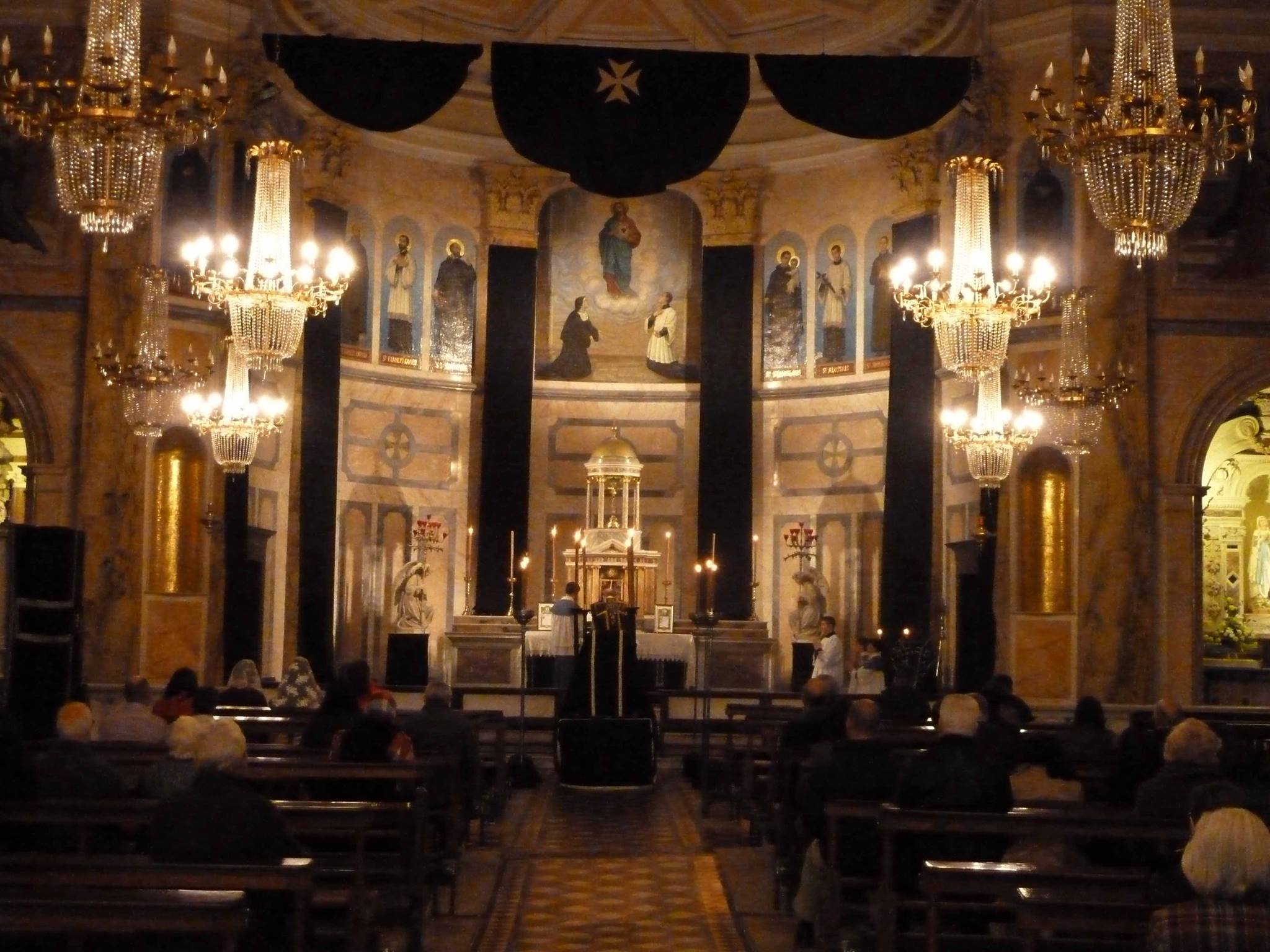
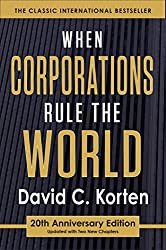

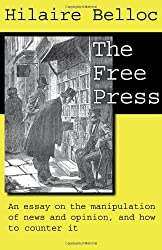
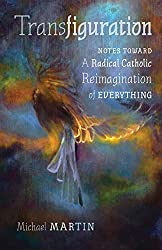

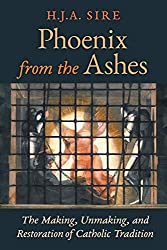


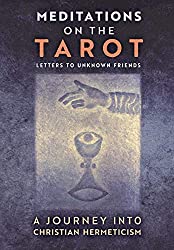
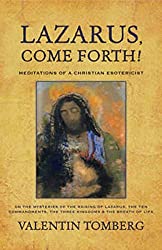

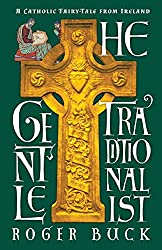
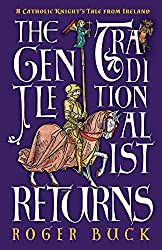

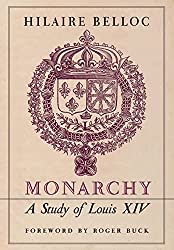
Comments
comments are currently closed
4 responses to “Valentin Tomberg, Catholicism and the Counter-Revolution—Pt. 9”
[…] Thus here is what I offered earlier at this website: […]
[…] there other ideas here? Yes, there are. For although I want no part of Rudolf Steiner‘s anti-ecclesiastical, anti-Catholic Anthroposophy, it would be wrong to deny that there are […]
What follows here is a lengthy response to Clay Masterson, who has raised things at different places at this site regarding Valentin Tomberg.
Clay, as I said, I am making the odd move of shifting locations – by responding to comments you have made elsewhere at my blog to this particular entry here. While odd, I hope this won’t be objectionable. For the blog above on Valentin Tomberg and Rudolf Steiner offers what I have found to be some of the most helpful things in dealing with the problems you are raising.
For as I said to you before:
Anyway, it will help I think to requote you here …
Clay, I am sorry for your education and do recognise the problem you speak of. I am also grateful for you sharing your journey and your difficulties here. It all evokes much in me as I read it. In referring to “your difficulties”, I am also still with an earlier comment you made (to which I already responded somewhat) when you spoke of what you saw – understandably – as inconsistency with Tomberg:
I imagine you, Clay, as struggling between contrary impressions – on the one hand admiring and respecting Tomberg, on the other seeing him as arbitrary and a zealot.
Certainly, I know similar reactions in my self in terms of my initial encounter with Tomberg.
But I have changed – after wrestling with him for 17 years and 12 readings of his masterpiece in English and French.
That reading over all this time has led me to a somewhat different interpretation than you regarding the Mystery of Tears and the attitude of soul which is LOVE.
Briefly, I don’t think Tomberg is being as neutral here as you suggest, although his language is very gentle and could be read as neutral.
But, at least for people in the West, I have come to feel Tomberg became very gravely concerned. Concerned that the West could LOSE this Mystery – or at least it could become greatly obscured.
It is this conviction that has helped me to see Tomberg as neither a zealot or arbitrary.
I am not sure how to argue this with you or even whether I should.
However, I will try to unpack some indications which may be helpful, if you are interested in what I am getting at.
We will begin with MotT itself and then go further. But starting with MotT, I would say there are many more passages that bear out the notion that VT is not neutral – but gravely concerned for preserving the Way of Tears, the Way of love in the West – and the world.
I would refer you to the very beautiful meditation on love on pgs 125-127 where he compares the Christian way of love with Eastern thinking of Ahamkara.
I would also refer to the meditation on the crucifix and tears on pgs 588-591.
However, beyond these there is much, much more.
Indeed, your own concerns as to zealotry and arbitrariness provide further evidence of Tomberg’s non-neutrality here …
He is taking these positions – which once seemed to me frighteningly rigid to me – because of profound reasons, very profound …
At least, this is what I have come to feel – but again my work with this problem is not simply with MotT alone. In my past, I have also studied intensively Tomberg’s pre-Catholic writings, as well as his other Catholic works including the little-known legal works written immediately after his conversion.
Those legal works beginning in 1944 – you can easily find much about them at this site (try legal and Tomberg in the search box) – reveal a Tomberg who, four years after leaving Steiner’s Anthroposophy in 1940 – is now saying some truly shocking and extraordinary things for a former Anthroposophist to say.
In the space of four years, he has moved from Anthroposophy to Catholicism, but not only Catholicism, but a Catholicism which is very ultramontane in many respects – calling for example for the necessity of the state to preserve Christianity from going under …
To preserve Christianity from going under …
To preserve the Mystery of Tears …
In this comments box, I cannot unpack everything I have been with in this struggle over the last 17 years.
But in a nutshell, an extremely compact nutshell …
I now see Tomberg was neither a zealot, nor arbitrary. Because there are REASONS he took the shocking course he did.
Some of those reasons are indicated in the post above about Tomberg and Steiner, which is why I place this here.
But there are many other indications elsewhere at this site.
You may want to look at what Tomberg writes in his legal works writes about Metternich here for Metternich is normally considered an extreme, arch reactionary ultra-conservative Catholic – yet Tomberg is suggesting it is not right to vilify him. He understood the danger to Christianity itself …
I realise I have not responded to everything you have said, including the tragedy of the education many Catholics have undoubtedly received.
But somewhat elliptically, I will add that in the legal theses Tomberg argues that the Church must be responsible for education. Not the State …
For while I have no doubt that many Catholics have been damaged by their education, it seems clear to me that, as far as both Steiner and Tomberg were concerned the normal, everyday education children received today is also damaging in the extreme – leading Steiner to say, as we quoted above:
“No longer to allow” … ! Radical stuff – and to, to my mind, it relates, again, to the serious reasons Tomberg had for the deeply conservative, ultramontane attitude he took – so abruptly! – from 1944 onwards …
But it may take many years to penetrate these. It has certainly taken me these many years – and at the core is the threat to Christianity that Rudolf Steiner also saw.
Even though Steiner was completely against the Catholic Church. Again, see above …
Clay, I think of you tenderly as I imagine you struggling to understand these apparent opposites in Tomberg’s thinking: how he can appear to be so open and universal on one side and so traditional and apparently “narrow” on the other.
It requires perseverance, I think, but perseverance with this struggle has led to the greatest meaning of my life …
[…] By this, he meant to say that no-one was more awake to the impending catastrophe than the Catholic Church. Coming from Steiner, this is exceedingly strange. Yet he clearly felt that, at least in terms of global danger, Anthroposophists and the rest of the world were drowsy or slumbering, whilst the Catholic Church was awake (more about this here). […]